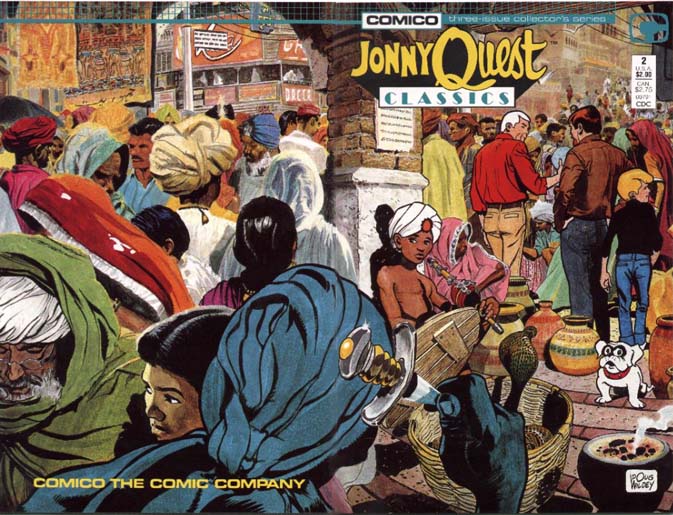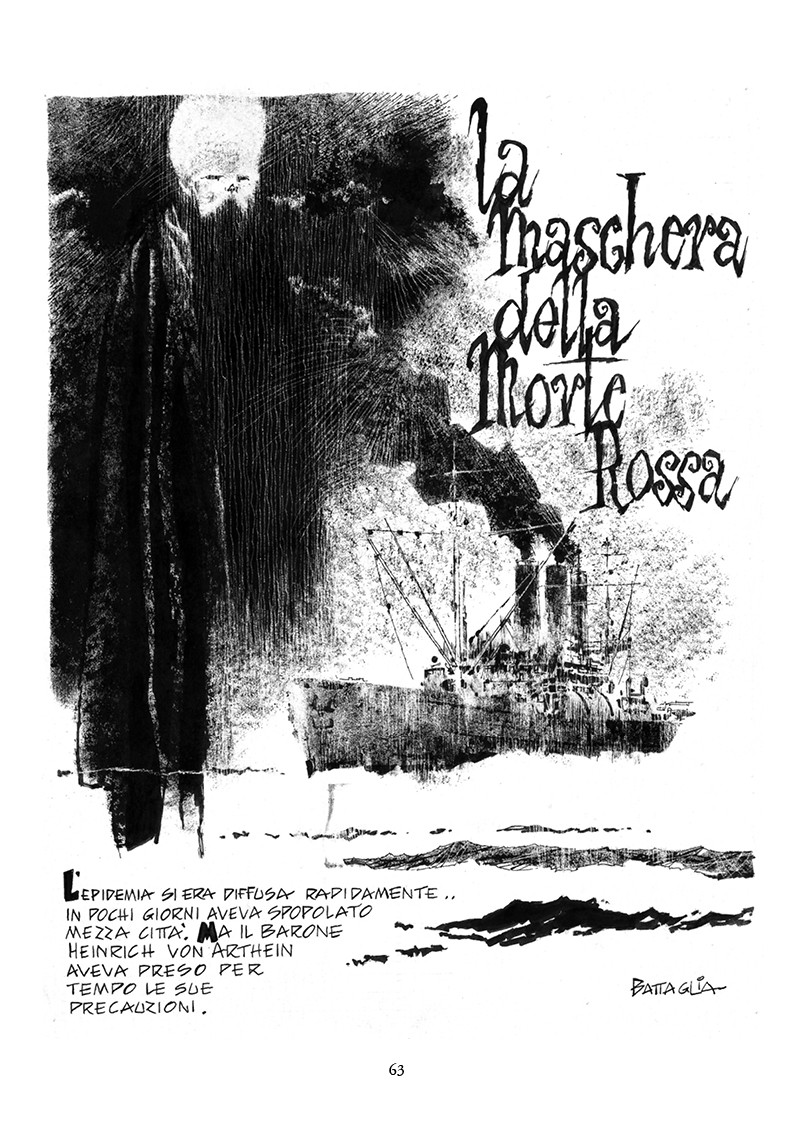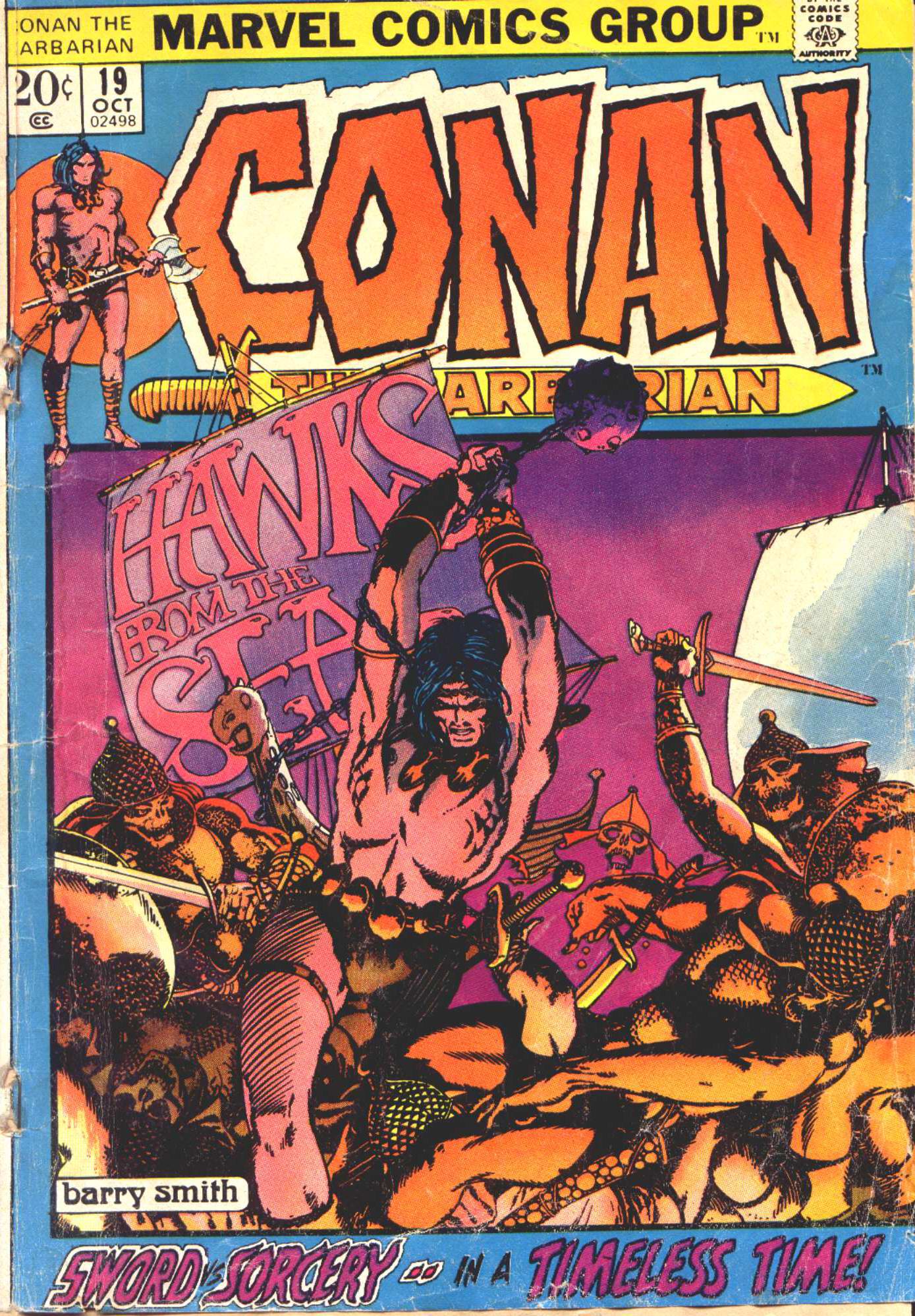|
|
Post by MDG on Dec 29, 2018 16:27:43 GMT -5
2. Jonny QuestComico, 1986 Not a lot to say because, frankly, I don't know if I've re-read them since they originally came out, but it's one of the books of the 80s that I don't think has lost its luster. Bill Loebs was the regular writer (after initial stories by creator Doug Wildey), and he was able to expand beyond the cartoon series without "going dark" or having constant "backstory" stories. I think everything was done in one, and usually very satisfying. Loebs remains my favorite writer of that era. It took a dozen or so issues for Hempel and Wheatley to become the regular art team, that wasn't a weakness. On the contrary, those issues had a lot of my favorite artists: Infantino, Anderson, Staton, Speigle...   
|
|
|
|
Post by Mister Spaceman on Dec 30, 2018 10:29:56 GMT -5
Edgar Allan Poe - Dino Battaglia (Nicolas Pesce Editore, 2016) (originally published in linus magazine, 1968-1973, 1981) Dino Battaglia (1923-1983) was an Italian comic book artist who excelled at adapting classic literature beginning in 1967 with a comic book version of Moby Dick. And while he created amazing black-and-white adaptations of the works of Robert Louis Stevenson, H.P. Lovecraft, E.T.A. Hoffmann, Charles Dickens, and Guy de Maupassant, his most exciting stories (to these eyes) were his adaptations of the works of Edgar Allan Poe. All but one of these adaptations were done between 1968 and 1973 and it's clear that Battaglia would have found a very receptive audience in one of the Warren horror magazines of the time. His moody, expressionistic style fits Poe like a finely tailored suit on a corpse.  
|
|
|
|
Post by Prince Hal on Jan 4, 2019 16:34:58 GMT -5
Conan the Barbarian (The Living Tarim Saga) 19-21; 23-26
September 1972-May 1973 Sorry this is late. Kept forgetting to post it. This might be the last Conan arc many would choose, primarily because the artwork is beautiful for the most part, but wildly inconsistent. The good news is that Barry Windsor-Smith’s art had been becoming more intricate and detailed by the month since he had started on Conan in October of 1970. The bad news was that as quickly as he had evolved into a student of the Pre-Raphaelites, he was ever more slow at delivering his masterpieces. He managed to draw four of the six covers, all four of which are superb, but his slow pace meant that the second half of #19 had to be reproduced from Smith’s uninked pencils; #22 had to be shipped out with a reprint of Conan #1 (pages lost in the mail was the story); and the last two issues were penciled by John Buscema. You might think that the sudden difference in everything from Conan’s build and appearance to the architecture and overall look of the Hyborian Age would have spelled (Thulsa) Doom for this six-chapter novel, but I think you’d be wrong, at least judging by my experience reading this long-form adaptation of several of Robert E. Howard’s stories and poems. This was Roy Thomas at his best, and it was Roy’s scripting and understanding of Howard’s strengths as a writer: establishing a headlong pace; vivid descriptions of place and action; a deft interweaving of violence, characterization and the supernatural, and a certain fatalistic tone. Roy touched all the bases here and held me captivated: the saga was a perfect combination of all of the elements from which it drew at their best: Howard’s source material, Roy’s love and understanding of Howard and his skills at pacing a comic; and the storytelling abilities of Smith and Buscema. The Howard sources, notably “Shadow of the Vulture,” a Crusaders vs. Turks story, were well supported by Roy’s original overarching plot of a fierce war fought over a religious leader/icon, the Living Tarim. I’ll be honest; I never suspected where Roy would go with the final pages of the saga as Conan discovers the Tarim himself. And I won’t spoil it for others. What I will say is that I never had seen in those days as stark and hard-edged an observation about religion and the wars fought in its name in a comic book. I’m probably overselling this, but remember, this was in 1972-73; religion was rarely if ever addressed in comics; if it was, it was always handled with deference to piety and tolerance. The story Roy wove from his imagination and Howard’s, was by no means a standard comic book approach. I still am amazed that he was allowed to go as far as he did. This was great Conan, great Roy Thomas, great Howard and for all the untoward circumstances, great art. 
|
|
|
|
Post by Roquefort Raider on Jan 5, 2019 11:51:25 GMT -5
A great write-up, Prince Hal, and a worthy choice indeed!!! The Tarim war was one of the best comic-book storylines ever! |
|
|
|
Post by Prince Hal on Jan 5, 2019 13:28:10 GMT -5
A great write-up, Prince Hal , and a worthy choice indeed!!! The Tarim war was one of the best comic-book storylines ever!Agreed! Well worth all the delays, problems, etc. I do wish Smith had been able to complete it, though. That would have been something to see. John Buscema ushered in a whole new look to the Hyborian Age, which was fine, but I wish Smith had been able to add the coda to the world he created. It remains the one that I continue to visualize when I think of Howard's original stories. BTW, "Shadow of the Vulture," which I read in its original form a few years later in the Zebra Books edition, The Sowers of the Thunder, remains a favorite Howard story for me. Akin to Richard Connell's classic "The Most Dangerous Game" in the skillfulness with which the ending is written. |
|
|
|
Post by Cei-U! on Mar 11, 2019 21:56:29 GMT -5
It’s funny. Over the fourteen years we’ve been doing the Twelve Days, I've only mentioned the man who is hands down my all-time favorite comic book artist a handful of times. It brings me great pleasure, then, to cite what is, in my opinion, the magnum opus of Gentleman Gene Colan: 2. Tomb of Dracula (Marvel, 1971-79) As with the case of Jonny Quest, others have beat me to the punch in singing the praises of this extraordinary horror comic, so I won’t elaborate further on what makes it so awesome. Suffice it to say that neither Colan, definitive scripter Marv Wolfman, nor Drac himself have ever been better than these 70 issues. Cei-U! I summon the garlic cloves and wooden stake! |
|